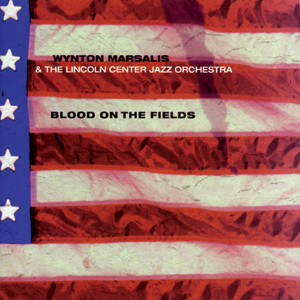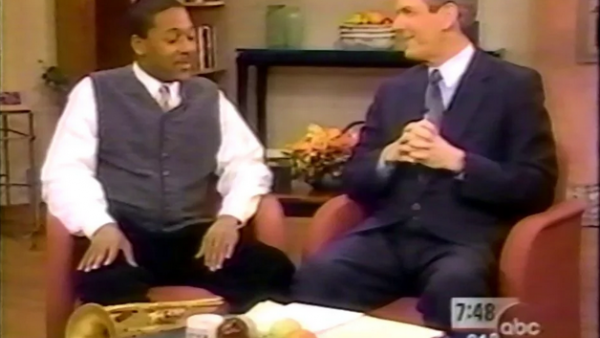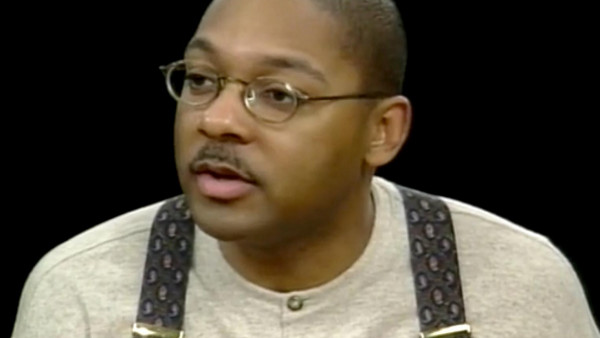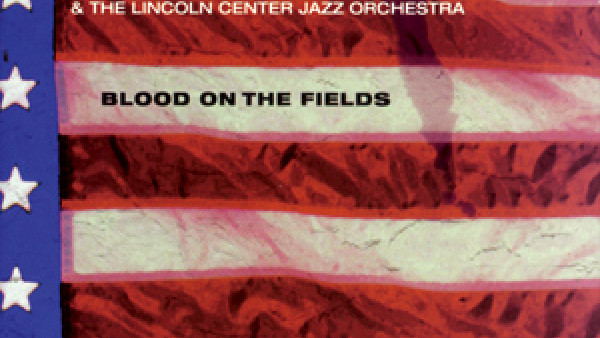Tapestry in Jazz
Wynton Marsalis looked uncharacteristically apprehensive when he stepped on stage at the Dorothy Chandler Pavilion Thursday night.
“I’m nervous,” he acknowledged, looking out at the audience still streaming into seats for the West Coast premiere of his jazz oratorio, “Blood on the Fields.”
“But when we’re finished, you’ll be ready to leave,” he added, with a sardonic grin, in an oblique reference to the nearly three-hour length of the work.
After intermission, he once again spoke of length, noting that “the second half isn’t as long as the first” and adding, almost apologetically, that cuts had been made after an East Coast warmup performance in Connecticut but that the piece “seems to be as long as it was before.”
Was it too long? And was Marsalis right to offer such explanations?
Probably not. An artist of Marsalis’ caliber can allow his work to stand on its on terms. And, from the audience response, it wasn’t too long at all. Most of the full-house crowd stayed until the end, enthusiastically applauding the efforts of Marsalis, the Lincoln Center Jazz Orchestra and singers Jon Hendricks, Cassandra Wilson and Miles Griffith.
And with good cause. “Blood on the Fields” is a work that, despite its problems, is an important jazz achievement. In it, Marsalis has demonstrated that the music can provide a complex tapestry of sound and feeling in an extended form. Most important, he has done so without resorting to quasi-classical instrumentation and without sacrificing the elements that he has repeatedly said are essential to jazz: swing, improvisation and a blues foundation.
There are, however, several areas in which the work does not quite succeed. It is, first of all, extremely episodic and difficult to follow. The text, conceived and written by Marsalis as the complex tale of the journey and eventual self-liberation of two slaves, was only occasionally articulated in a fashion that clearly conveyed its message.
Part of the problem was with the melodies, which varied from a riff-based jazz style to more disjunct contemporary-sounding lines. Marsalis’ capacity to produce captivating, emotionally multilayered themes, perhaps the musical skill that has least to do with training and technique and the most to do with sheer inspiration, did not reveal itself in this work. And that may be its single most obvious flaw.
Occasional passages—the jaunty, rhythmic riffing of “Freedom Is in the Trying” and the lyrical opening lines of “Oh, What a Fool I’ve Been”—suggested that the gift for melody is there, still not quite unwrapped. More often, the skill that took the spotlight was Marsalis’ rapidly growing capacity to create compelling orchestral textures. Clearly influenced by Duke Ellington and Billy Strayhorn, almost every instrumental segment was a thrilling ensemble experience in itself.
But the upbeat, energetic, rhythmic quality of the instrumental music was not always appropriate for the dark messages that kept surfacing in the lyrics. As with other unfulfilled aspects of this frequently fascinating, occasionally frustrating composition, the instrumental passages never quite integrated themselves into the overall dramatic flow that Marsalis’ text demands.
Aside from the work itself, the evening was filled with rare moments from a large cast of major-league jazz talent. Hendricks and Wilson, of course, are independent vocal stars in their own right. And the Lincoln Center Jazz Orchestra includes such sterling individual instrumentalists as trumpeter Marcus Printup, trombonist Wycliff Gordon, saxophonists Wess Anderson and Robert Stewart and pianist Eric Reed.
Most of them lived up to expectation. Hendricks’ charismatic presence was a joy to behold. Although his role was considerably smaller than those of the other singers, he dominated the stage every time he sang, his readings informed by rare musical intelligence. And when he scatted, he was the Hendricks of old, riffing with the imagination and energy of a world-class instrumentalist.
The far lesser-known Griffith was a pleasant surprise. Blessed with a big, outspoken voice, his lyrics were accessible and understandable. In many respects, he was the singer who most accurately interpreted his role.
Wilson’s work, however, was elusive. Diffident to the point of isolation, she almost never used her superb voice in a communicative fashion, and her lyrics were often masked by dully intoned phrasing.
Among the instrumentalists, Marsalis—who took a few impressive turns—was marvelous, his playing a kind of mini-primer of jazz trumpeting.
Printup’s soloing paralleled Marsalis’ in its capacity to a blend big, emotion-drenched sound with articulation that moved easily from traditional riffs to contemporary rhythms.
Gordon was a one-man band, batting out licks on an over-the-shoulder tuba, using his trombone to produce an array of sounds that often were distinctly un-trombone-like, and tossing in some vocalized gospel singing for good measure.
Anderson’s alto saxophone justified his “Warm Daddy” nickname, especially when he soared up into gorgeously articulated high harmonic notes. Stewart was, as always, gutsy and down-to-earth.
At the other end of the saxophone section, multi-instrumentalists Victor Goines and Gabriel Feldstein added rich, colorful excursions through bass and E-flat clarinet.
Reed continued to demonstrate that he is evolving into one of the most versatile young players in jazz.
Remarkably, despite Marsalis’ apprehensions about length, despite the work’s uneven aspects, “Blood on the Fields” was still an eminently listenable experience.
At its best, it offered a beacon of opportunity for the expansion of jazz music into larger, more productive arenas of creativity.
by Don Heckman
Source: Los Angeles Times





